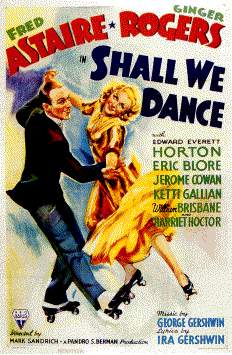
Wednesday, June 16, 2004 12:00 PM
Bloomsday at 100Tuesday, June 15, 2004 4:00 PM

Kierkegaard on death:
"I have thought too much about death not to know that he cannot speak earnestly about death who does not know how to employ (for awakening, please note) the subtlety and all the profound waggery which lies in death. Death is not earnest in the same way the eternal is. To the earnestness of death belongs precisely that capacity for awakening, that resonance of a profound mockery which, detached from the thought of the eternal, is an empty and often brash jest, but together with the thought of the eternal is just what it should be, utterly different from the insipid solemness which least of all captures and holds a thought with tension like that of death."
-- Works of Love,
Harper Torchbooks, 1964, p. 324
For more on "the thought of the eternal," see the discussion of the number 373 in Directions Out and Outside the World, both of 4/26/04.
"... as an inscription over the graveyard gate one could place 'No compulsion here' or 'With us there is no compulsion.' "
-- Works of Love,
Harper Torchbooks, 1964, p. 324
... When John Wayne spoke, there was no mistaking his intentions; he had a sexual authority so strong that even a child could perceive it. And in a world we understood early to be characterized by venality and doubt and paralyzing ambiguities, he suggested another world, one which may or may not have existed ever but in any case existed no more: a place where a man could move free. could make his own code and live by it; a world in which, if a man did what he had to do, he could one day take the girl and go riding through the draw and find himself home free, not in a hospital with something wrong inside, not in a high bed with the flowers and the drugs and the forced smiles, but there at the bend in the bright river, the cottonwoods shimmering in the early morning sun."
-- Joan Didion,
"John Wayne: A Love Song," 1965
"He is home now. He is free."
-- Ron Reagan, Friday, June 11, 2004
"Beware, therefore, of the dead! Beware of his kindness; beware of his definiteness, beware of his strength; beware of his pride! But if you love him, then remember him lovingly, and learn from him, precisely as one who is dead, learn the kindness in thought, the definiteness in expression, the strength in unchangeableness, the pride in life which you would not be able to learn as well from any human being, even the most highly gifted."
-- Works of Love,
Harper Torchbooks, 1964, p. 328
Sunday, June 13, 2004 6:23 PM
Thanks to JadedFey
for pointing out this
Ray Charles connection.
Saturday, June 12, 2004 6:12 PM
Don Giovanni, Part II
(See entries of June 8, 2004,
and June 4, 2004.)
Ingmar Bergman long ago
"earned the nickname of
the 'demon director,'
such are the demands that
he makes on his performers."
-- Anthony Lane in
The New Yorker,
June 14 & 21, 2004

AFP/GETTY IMAGES
Ingmar Bergman
on the set in
the late 1940's
From the entry of
June 4 last year:
Commentary by Jack Kerouac,
from an entry of May 21, 2004:
"So what do we all do in this life which comes on so much like an empty voidness yet warns us that we will die in pain, decay, old age,
"... listen to the words of Pablo, the servant of Don Juan, who is summoned from the underworld in 'The Devil’s Eye,' Bergman’s little-known comedy of 1960. Pablo seduces the wife of a minister, and then, sorrowful and sated, falling to his knees, he addresses her thus:
'First, I’ll finish off that half-dug vegetable patch I saw. Then I’ll sit and let the rain fall on me. I shall feel wonderfully cool. And I’ll breakfast on one of those sour apples down by the gate. After that, I shall go back to Hell.' "
Saturday, June 12, 2004 3:31 PM

-- "They All Laughed,"
words by Ira Gershwin,
music by George Gershwin,
from the 1937 film Shall We Dance
(sung by Ginger Rogers,
then danced by
Fred Astaire and Ginger Rogers)

See also
the entry of June 4 last year,
The Four Last Things.
Friday, June 11, 2004 11:00 AM
Tuesday, June 8, 2004 6:11 PM



Tuesday, June 8, 2004 3:31 PM
Anomaly
Robert Quine, 61, By BEN SISARIO Robert Quine, a noted guitarist of the New York rock scene of the 1970's and 80's who played with Richard Hell, Lou Reed and others, died last week in his home in Manhattan. He was 61. He was found dead by the police on Saturday, said James Marshall, a friend. The police found a note and said they believed the death was a suicide but are awaiting a medical examiner's report. Mr. Marshall said he believed Mr. Quine died on May 31. In the loud world of New York punk, where crude simplicity trumped most conventional notions of musical skill, Mr. Quine stood out as a stylish virtuoso.... "He was an extraordinary mixture of taste, intelligence, and rock 'n' roll abilities, coupled with major technique and a scholar's memory for every decent guitar lick ever played under the musical sun," Mr. Reed said.... Mr. Quine was an anomaly in the punk scene. Older than most of his fellow musicians, he had a law degree and was nearly bald, and wore button-down shirts and sport coats and described his appearance as that of a "deranged insurance salesman.".... His uncle, the philosopher W. V. Quine, died in 2000. |
| "Anomalies must be expected along the conceptual frontier between the temporal and the eternal." -- The Death of Adam, by Marilynne Robinson, Houghton Mifflin, 1998, essay on Marguerite de Navarre
"D'exterieur en l'interieur entre |
Sunday, June 6, 2004 4:30 PM
| From Fritz Leiber's "Damnation Morning," 1959:
Bordered version ... "Here is how it stacks up: You've bought your way with something other than money into an organization of which I am an agent...." "It's a very big organization," she went on, as if warning me. "Call it an empire or a power if you like. So far as you are concerned, it has always existed and always will exist. It has agents everywhere, literally. Space and time are no barriers to it. Its purpose, so far as you will ever be able to know it, is to change, for its own aggrandizement, not only the present and the future, but also the past. It is a ruthlessly competitive organization and is merciless to its employees." "I. G. Farben?" I asked grabbing nervously and clumsily at humor. She didn't rebuke my flippancy, but said, "And it isn't the Communist Party or the Ku Klux Klan, or the Avenging Angels or the Black Hand, either, though its enemies give it a nastier name." "Which is?" I asked. "The Spiders," she said. That word gave me the shudders, coming so suddenly. I expected the sigil to step off her forehead and scuttle down her face and leap at She watched me. "You might call it the Double Cross," she suggested, "if that seems better." |
Sunday, June 6, 2004 1:29 PM
| From The Man in the High Castle by Philip K. Dick Juliana said, "Oracle, why did you write The Grasshopper Lies Heavy? What are we supposed to learn?" "You have a disconcertingly superstitious way of phrasing your question," Hawthorne said. But he had squatted down to witness the coin throwing. "Go ahead," he said; he handed her three Chinese brass coins with holes in the center. "I generally use these." She began throwing the coins; she felt calm and very much herself. Hawthorne wrote down her lines for her. When she had thrown the coins six times, he gazed down and said: "Sun at the top. Tui at the bottom. Empty in the center."
"Do you know what hexagram that is?" she said. "Without using the chart?" "Yes," Hawthorne said. "It's Chung Fu," Juliana said. "Inner Truth. I know without using the chart, too. And I know what it means." From 12:5 ... and the almond tree shall flourish, and the grasshopper shall be a burden, and desire shall fail: because man goeth to his long home, and the mourners go about the streets |
Sunday, June 6, 2004 1:28 PM
From a review of On the Composition of Images, Signs & Ideas, by Giordano Bruno:
Proteus in the House of Mnemosyne (which is the fifth chapter of the Third Book) relies entirely on familiarity with Vergil's Aeneid (even when the text shifts from verse to prose). The statement, "Proteus is, absolutely, that one and the same subject matter which is transformable into all images and resemblances, by means of which we can immediately and continually constitute order, resume and explain everything," reads less clear than the immediate analogy, "Just as from one and the same wax we awaken all shapes and images of sensate things, which become thereafter the signs of all things that are intelligible." |
When I was your student, you never mentioned the Homeric parallels in discussing Joyce's Ulysses But you did supply "special information" in introducing many of the masterpieces: a map of Dublin for Ulysses.... Would you be able to suggest some equivalent for your own readers? Joyce himself very soon realized with dismay that the harping on those essentially easy and vulgar "Homeric parallelisms" would only distract one's attention from the real beauty of his book. He soon dropped these pretentious chapter titles which already were "explaining" the book to non-readers. In my lectures I tried to give factual data only. A map of three country estates with a winding river and a figure of the butterfly Parnassius mnemosyne for a cartographic cherub will be the endpaper in my revised edition of Speak, Memory. |
Saturday, June 5, 2004 11:11 AM

Friday, June 4, 2004 11:22 AM
Feel lucky?
 This entry was inspired by the following...
This entry was inspired by the following...
1. A British blogger's comment today. This man, feeling like a miserable failure himself, was cheered up by the following practical joke: "If really fed up you could try putting in, miserable failure, (no quote marks) into Google and pressing the 'I'm feeling lucky' button."
2. The page, excerpts from which are shown above, that you get if you put lucky (no quote marks) into Google and press the "I'm feeling lucky" button.
3. My own entries of May 31 on Language Games and of June 1 on language and history, Seize the Day and One Brief Shining Moment.
4. The related June 1 entry of Loren Webster, Carpe Diem, on the Marilyn Monroe rose. Images from Carpe and Shining are combined below:

Thursday, June 3, 2004 3:17 PM
STAR WARS
Continued...
| Today's New York Times story on Richard Helms, together with my reminiscences in the entry that follows it below, suggest the following possibility for symbol-mongering:
|

Not even the most powerful
can alter the alignment
of the stars.
In a related story....
The Good Bad Boy
By Alison Lurie
Tuesday, June 1, 2004 8:23 PM

Tuesday, June 1, 2004 3:31 PM
Seize the Day
From a March 31 entry --
A Jesuit cites Quine:
"To be is to be the value of a variable."
-- Willard Van Orman Quine, cited by Joseph T. Clark, S. J., in Conventional Logic and Modern Logic
For example, the variable
in the Crystal Software program EasyPattern Helper supposedly helps to find any valid day number, 1-31, within a date, by first translating "[Day]" into the regular expression
(?:(?:0?[1-9]|[12]\d|3[01])).
But it turns out that this expression fails to find the day "22" -- at least during a trial run in the EasyPattern Helper search window.
The following seems apt:
"A tongue-in-cheek comment by programmers is worth thinking about: 'Sometimes you have a programming problem and it seems like the best solution is to use regular expressions; now you have two problems.' Regular expressions are amazingly powerful and deeply expressive. That is the very reason writing them is just as error-prone as writing any other complex programming code."
-- David Mertz, Learning to Use Regular Expressions
The following irregular expression also seems apt:
&3#!+*^$#!!
Monday, May 31, 2004 7:00 PM
Language Games:
Now You're Playing
with Power
My latest preoccupation...
Using search-and-replace programs to reformat earlier Xanga entries. This involves the use of "regular expressions," which lead to the following thoughts....
Notes on
Formal Language Theory
and Parsing
James Power
Department of Computer Science
NATIONAL UNIVERSITY OF IRELAND, MAYNOOTH
Maynooth, Co. Kildare, Ireland.

Click on picture
for details.
Here's more on
language games and robot wisdom
from an authority on James Joyce,